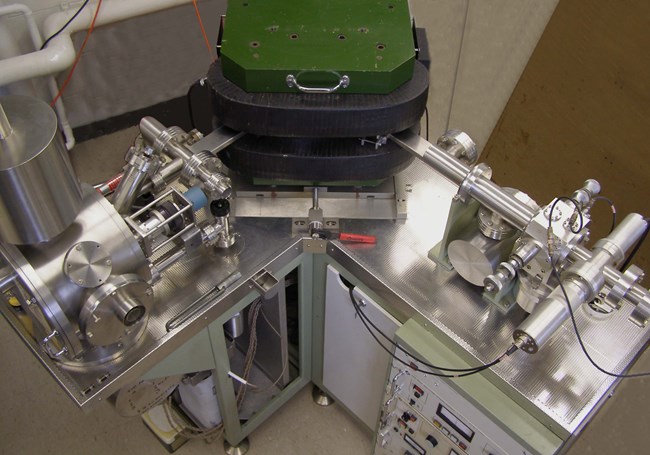
Radiometric dating calculates an age in years for geologic materials by measuring the presence of a short-life radioactive element, e.g., carbon-14, or a long-life radioactive element plus its decay product, e.g., potassium-14/argon-40. The term applies to all methods of age determination based on nuclear decay of naturally occurring radioactive isotopes. Bates and Jackson (1984)
To determine the ages in years of Earth materials and the timing of geologic events such as exhumation and subduction, geologists utilize the process of radiometric decay. Geologists use these dates to further define the boundaries of the geologic periods shown on the geologic time scale. Radiometric decay occurs when the nucleus of a radioactive atom spontaneously transforms into an atomic nucleus of a different, more stable isotope. This transformation happens via the emission of particles such as electrons (known as beta decay) and alpha particles. For instance, rubidium-87 (87Rb), an unstable element, becomes strontium-87 (87Sr), a stable element, via beta decay. As explained on WebGeology from the University of Tormsø, Norway: One neutron of the nucleus emits a beta particle, which is identical to an electron. In addition the neutron emits a neutral particle that is called an antineutrino. By emitting a beta particle, the neutron is transformed into a proton. This results in a nucleus composed of 38 protons and 49 neutrons, corresponding to strontium’s nucleus of 87 atomic particles. Energy is released during this process. The rubidium-strontium method has been a popular method to determine the absolute age of geological processes.
When discussing decay rates, scientists refer to “half-lives”—the length of time it takes for one-half of the original atom of the radioactive isotope to decay into an atom of a new isotope. Because decay occurs at a fixed rate (this is the key point), scientists can measure the amount of decayed material in the sample, determine the ratio between original and decayed material, and then calculate the sample’s age. Depending on the half-life and the material being dated, various methods are used. For instance, geologists use the Sm-Nd (samarium-147/neodymium-143) method for determining the age of very old materials (e.g., meteorites and metamorphic rocks) or when a rock became crystallized (in the mantle) or metamorphosed (at a subduction zone). For young organic materials, the carbon-14 (radiocarbon) method is used. The effective dating range of the carbon-14 method is between 100 and 50,000 years.
Table 1. Some commonly used element pairs to establish absolute ages
|
Original element |
Decay product |
Half-life (years) |
Dated materials |
|
Uranium-238 |
Lead-206 |
4.5 billion |
Zircon |
|
Uranium-235 |
Lead-207 |
704 million |
|
|
Rubidium-87 |
Strontium-87 |
48.8 billion |
Many rock-forming minerals (e.g., biotite, muscovite, amphibole, and Potassium feldspar) |
|
Potassium-40 |
Argon-40 |
1.25 billion |
Many rock-forming minerals (e.g., biotite, muscovite, amphibole, and Potassium feldspar) |
|
Samarium-147 |
Neodymium-143 |
106 billion |
Common in very small concentrations in any rock |
|
Carbon-14 |
Nitrogen-14 |
5,730 |
Previously living things |
Sources: Edwards and Pojeta (1999); Wicander and Monroe (2000); U.S. Geological Survey; WebGeology.
Last updated: October 3, 2018
